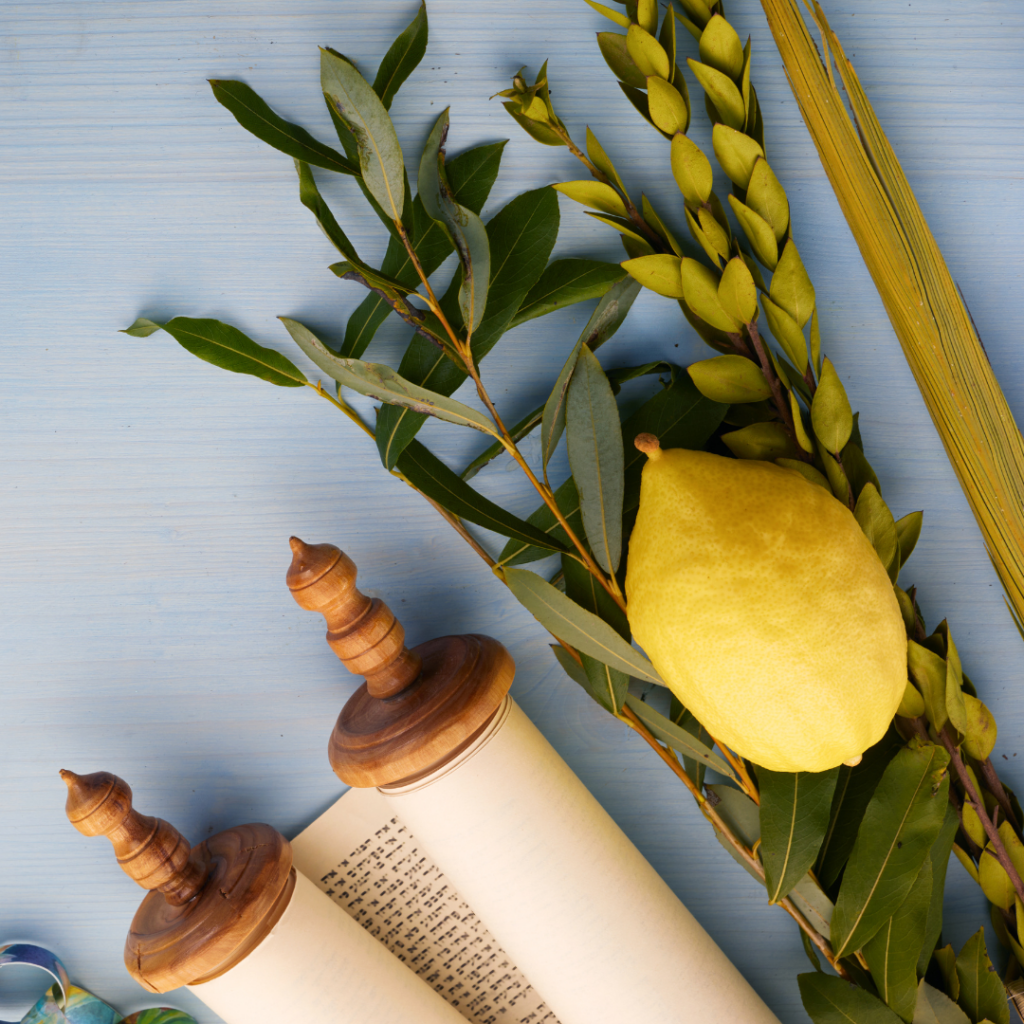Imagine you’ve bought a ticket to the hottest show in town. It’s not on Broadway. Rather, it’s right outside your home — in your backyard, on your rooftop. When you purchased the ticket, you received a set of instructions, including preparatory steps to take prior to opening night. Some of you dread this. You try to get a refund. (There are no refunds.) Others of you are excited to realize that you’ve just signed up for a week of immersive theater.
The instructions tell you to build a hut, and you’re given some pretty detailed specifications. You need at least three walls. If you do build a fourth, put the entrance here. The walls can’t be too high or too low. The place you build this hut cannot have anything above it. Your roof must be made of something that grows from the ground, leaves or branches but not food, and when you make the roof, there must be room between the vegetation to see the stars. Prior to the start of the show, you’ll also want to acquire props: an etrog, myrtle, date palm and willow. Great, now you’re ready!

If you’re following the director’s instructions, you move out of your house and into the hut. You sleep there, eat there, invite others in — some who are living, some who have passed and some whom you’ve only read about in Torah. You gather, sing, eat and perform this piece of theater. Every day, except on Shabbat, you gather your four props together, recite your lines and perform a choreographed movement piece, waving them in all directions. As you move and shake the props, you smell the citrus of the etrog and myrtle. You feel your nose tingle at the scent. You listen to the leaves and branches of the palm, willow and myrtle. The sound opens your ears and transports you to another time and place.
This is immersive theater. This is Sukkot.
Modern immersive theater began with Antonin Artaud, a French surrealist and theater practitioner who established the “Theater of Cruelty.” By confronting audience members and affronting their senses with intense lighting, abrasive sound and violent gesture, Artaud sought to awaken his audience to life. Later practitioners introduced other ways to engage their audiences, including site specific performances and audience participation. Immersive theater, though it may employ different strategies, seeks to obscure the line between actor and audience and to dismantle the fourth wall, an essential component of traditional theatrical performances.
While Artaud is credited with modern immersive theater, earlier forms can be found in ancient cultures — in open-air performances and religious ceremonies that invited the community to become a part of the ritual acts.


The Sukkot text appears in Torah in Leviticus 23:39-43 and relays that when the Israelites enter the land, they are to live in booths or sukkot, gather the four species mentioned above and rejoice before God for seven days. They do this, Torah states, to commemorate the time when God made the Israelites live in booths after they were brought out from Egypt. Later, in the rabbinic period, in Tractate Sukkah, the Talmud focuses on the specifics of how to construct a sukkah, laws about the four species and festival observance. Of note is the description of the water-drawing ceremony, an annual ritual where the entire community was immersed in song, dance, flaming torches and music. Candelabrums were placed in such a way that every courtyard in Jerusalem was illuminated, thus transforming the entire community into the playing area.
During Yom Kippur before the destruction of the Second Temple, the climatic act — the high priest entering the Holy of Holies to speak God’s secret name and to atone for himself, his family and the community — was in more ways a traditional form of theater. In the ancient Temple, not only was there a fourth wall; the high priest entered a room alone, and all the action happened offstage. The ancient ritual and the liturgy of Yom Kippur today invite us to confront our own vulnerability and mortality; we tremble in fear and awe of God.
However, on Sukkot, we move out of our ancient and contemporary temples, out of our permanent structures and back into the wilderness. Suddenly, we find ourselves laughing, singing and eating inside our shabby structures. Suddenly, our senses rouse with the pleasant fragrance of the etrog and myrtle. Suddenly, we find ourselves central players in the ritual celebration.

If Yom Kippur’s focal point is the Holy of Holies, where the high priest crossed into God’s realm, then what is Sukkot’s focal point? When Sukkot is discussed in Leviticus (above), the text specifically states how the Israelites lived in Sukkot after their exodus from Egypt. However, there is no mention of the Israelites living in these temporary shelters. As Rashi notes, the sukkot were not booths, but rather the עַנְנֵי כָבוֹד — the Divine Clouds of Glory or pillar of cloud that sheltered the Israelites as they moved through the wilderness (Exodus 13:21). On Sukkot, we widen the possibility of experiencing divinity, whether that is a spiritual awakening or a physical awakening to the world in which we live.
As Artaud wrote in The Theater and Its Double, “If our life lacks a constant magic, it is because we choose to observe our acts and lose ourselves in consideration of their imagined form and meaning, instead of being impelled by their force.”
Chag Sameach! Enjoy the show!











